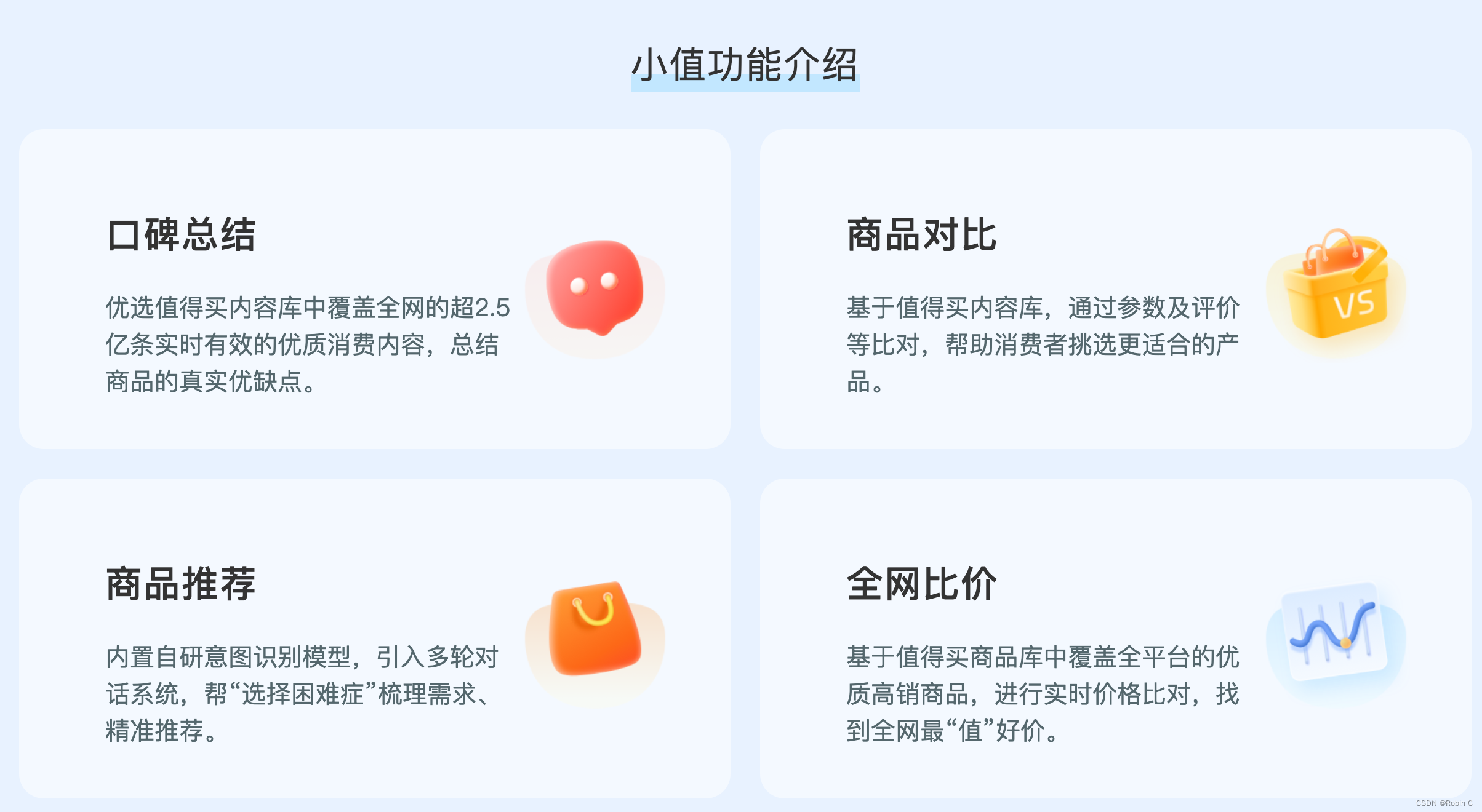目录
- 写在前面的话
- 下载数据
- 模型配置文件
- 加载数据
- 创建一个UNet2DModel
- 创建一个调度器
- 训练模型
- 完整版代码:
写在前面的话
这是我们研发的用于 消费决策的AI助理 ,我们会持续优化,欢迎体验与反馈。微信扫描二维码,添加即可。
官方链接:https://ailab.smzdm.com/


本教程将讲述 如何在Smithsonian Butterflies数据集的子集上,从头开始训练UNet2DModel,最终训练个【无条件图片生成模型】,就是不能进行文生图的啊,我觉得比较适合垂直领域的数据训练。
下载数据
训练的数据集在这个:https://huggingface.co/datasets/huggan/smithsonian_butterflies_subset。可以使用代码进行下载。
完整的代码在最后,因为网络的原因,调代码花了一些时间(官网默认上传hugging face,我没上传),所以要运行的话,copy最后的全部代码。我的显卡是3050,8G显存。
from datasets import load_dataset
dataset = load_dataset("huggan/smithsonian_butterflies_subset")
代码运行完成后,它的默认下载路径在:
/Users/用户名/.cache/huggingface/datasets
进入该目录后,可以看见下载的文件夹。
模型配置文件
为了方便起见,训练一个包含超参数的配置文件:
from dataclasses import dataclass@dataclass
class TrainingConfig:image_size = 128 # the generated image resolutiontrain_batch_size = 16eval_batch_size = 16 # how many images to sample during evaluationnum_epochs = 50gradient_accumulation_steps = 1learning_rate = 1e-4lr_warmup_steps = 500save_image_epochs = 10save_model_epochs = 30mixed_precision = "fp16" # `no` for float32, `fp16` for automatic mixed precisionoutput_dir = "ddpm-butterflies-128" # the model name locally and on the HF Hubpush_to_hub = True # whether to upload the saved model to the HF Hubhub_private_repo = Falseoverwrite_output_dir = True # overwrite the old model when re-running the notebookseed = 0config = TrainingConfig()
加载数据
from datasets import load_datasetconfig.dataset_name = "huggan/smithsonian_butterflies_subset"
dataset = load_dataset(config.dataset_name, split="train")
大家也可以添加一下,Smithsonian Butterflies 数据集中一些其他数据(创建一个ImageFolder文件夹),但是在 配置文件中 要进行添加对应的变量 imagefolder。当然,也可以使用自己的数据。
import matplotlib.pyplot as pltfig, axs = plt.subplots(1, 4, figsize=(16, 4))
for i, image in enumerate(dataset[:4]["image"]):axs[i].imshow(image)axs[i].set_axis_off()
fig.show()

不过,这些图像的大小都不一样,所以你需要先对它们进行预处理:
- 统一图像尺寸:缩放到配置文件中的指定尺寸;
- 数据增强:通过裁剪、翻转等方法
- 标准化:将像素值的范围控制在[-1, 1]
from torchvision import transformspreprocess = transforms.Compose([transforms.Resize((config.image_size, config.image_size)),transforms.RandomHorizontalFlip(),transforms.ToTensor(),transforms.Normalize([0.5], [0.5]),]
)
对图像进行预处理,将图像通道转化为RGB
def transform(examples):images = [preprocess(image.convert("RGB")) for image in examples["image"]]return {"images": images}dataset.set_transform(transform)
可以再次可视化图像,以确认它们是否已经被调整。之后就可以将数据集打包到DataLoader中进行训练了!
import torch
train_dataloader = torch.utils.data.DataLoader(dataset, batch_size=config.train_batch_size, shuffle=True)
创建一个UNet2DModel
from diffusers import UNet2DModelmodel = UNet2DModel(sample_size=config.image_size, # the target image resolutionin_channels=3, # the number of input channels, 3 for RGB imagesout_channels=3, # the number of output channelslayers_per_block=2, # how many ResNet layers to use per UNet blockblock_out_channels=(128, 128, 256, 256, 512, 512), # the number of output channels for each UNet blockdown_block_types=("DownBlock2D", # a regular ResNet downsampling block"DownBlock2D","DownBlock2D","DownBlock2D","AttnDownBlock2D", # a ResNet downsampling block with spatial self-attention"DownBlock2D",),up_block_types=("UpBlock2D", # a regular ResNet upsampling block"AttnUpBlock2D", # a ResNet upsampling block with spatial self-attention"UpBlock2D","UpBlock2D","UpBlock2D","UpBlock2D",),
)
还有一个方法,快速检查样本图像的形状是否与模型输出形状匹配。
sample_image = dataset[0]["images"].unsqueeze(0)print("Input shape:", sample_image.shape)
print("Output shape:", model(sample_image, timestep=0).sample.shape)
还需要一个调度器来为图像添加一些噪声。
创建一个调度器
调度器的作用在不同的场景下会生成不同的作用,这取决于您是使用模型进行训练还是推理。
在推理过程中,调度器从噪声中生成图像。
在训练过程中,调度器从图像上生成噪声。
可以看下DDPMScheduler调度器给图像增加噪声的效果:
import torch
from PIL import Image
from diffusers import DDPMSchedulernoise_scheduler = DDPMScheduler(num_train_timesteps=1000)
noise = torch.randn(sample_image.shape)
timesteps = torch.LongTensor([50])
noisy_image = noise_scheduler.add_noise(sample_image, noise, timesteps)Image.fromarray(((noisy_image.permute(0, 2, 3, 1) + 1.0) * 127.5).type(torch.uint8).numpy()[0])

模型的训练对象,就是去预测这些被覆盖在图像上的噪声。在这个训练过程中,loss可以被计算。
import torch.nn.functional as Fnoise_pred = model(noisy_image, timesteps).sample
loss = F.mse_loss(noise_pred, noise)
训练模型
到目前为止,已经完成了开始训练模型的大部分内容,剩下的就是将所有内容组合在一起。
再添加一个优化器和一个学习率调度器:
from diffusers.optimization import get_cosine_schedule_with_warmupoptimizer = torch.optim.AdamW(model.parameters(), lr=config.learning_rate)
lr_scheduler = get_cosine_schedule_with_warmup(optimizer=optimizer,num_warmup_steps=config.lr_warmup_steps,num_training_steps=(len(train_dataloader) * config.num_epochs),
)
你还需要一种方法去评估模型,可以使用 DDPMPipeline 去生成一个batch,然后将他存为一个grid。
from diffusers import DDPMPipeline
import math
import osdef make_grid(images, rows, cols):w, h = images[0].sizegrid = Image.new("RGB", size=(cols * w, rows * h))for i, image in enumerate(images):grid.paste(image, box=(i % cols * w, i // cols * h))return griddef evaluate(config, epoch, pipeline):# Sample some images from random noise (this is the backward diffusion process).# The default pipeline output type is `List[PIL.Image]`images = pipeline(batch_size=config.eval_batch_size,generator=torch.manual_seed(config.seed),).images# Make a grid out of the imagesimage_grid = make_grid(images, rows=4, cols=4)# Save the imagestest_dir = os.path.join(config.output_dir, "samples")os.makedirs(test_dir, exist_ok=True)image_grid.save(f"{test_dir}/{epoch:04d}.png")
现在开始梳理 整个模型训练的循环过程:
from accelerate import Accelerator
from huggingface_hub import HfFolder, Repository, whoami
from tqdm.auto import tqdm
from pathlib import Path
import osdef get_full_repo_name(model_id: str, organization: str = None, token: str = None):if token is None:token = HfFolder.get_token()if organization is None:username = whoami(token)["name"]return f"{username}/{model_id}"else:return f"{organization}/{model_id}"def train_loop(config, model, noise_scheduler, optimizer, train_dataloader, lr_scheduler):# Initialize accelerator and tensorboard loggingaccelerator = Accelerator(mixed_precision=config.mixed_precision,gradient_accumulation_steps=config.gradient_accumulation_steps,log_with="tensorboard",logging_dir=os.path.join(config.output_dir, "logs"),)if accelerator.is_main_process:if config.push_to_hub:repo_name = get_full_repo_name(Path(config.output_dir).name)repo = Repository(config.output_dir, clone_from=repo_name)elif config.output_dir is not None:os.makedirs(config.output_dir, exist_ok=True)accelerator.init_trackers("train_example")# Prepare everything# There is no specific order to remember, you just need to unpack the# objects in the same order you gave them to the prepare method.model, optimizer, train_dataloader, lr_scheduler = accelerator.prepare(model, optimizer, train_dataloader, lr_scheduler)global_step = 0# Now you train the modelfor epoch in range(config.num_epochs):progress_bar = tqdm(total=len(train_dataloader), disable=not accelerator.is_local_main_process)progress_bar.set_description(f"Epoch {epoch}")for step, batch in enumerate(train_dataloader):clean_images = batch["images"]# Sample noise to add to the imagesnoise = torch.randn(clean_images.shape).to(clean_images.device)bs = clean_images.shape[0]# Sample a random timestep for each imagetimesteps = torch.randint(0, noise_scheduler.config.num_train_timesteps, (bs,), device=clean_images.device).long()# Add noise to the clean images according to the noise magnitude at each timestep# (this is the forward diffusion process)noisy_images = noise_scheduler.add_noise(clean_images, noise, timesteps)with accelerator.accumulate(model):# Predict the noise residualnoise_pred = model(noisy_images, timesteps, return_dict=False)[0]loss = F.mse_loss(noise_pred, noise)accelerator.backward(loss)accelerator.clip_grad_norm_(model.parameters(), 1.0)optimizer.step()lr_scheduler.step()optimizer.zero_grad()progress_bar.update(1)logs = {"loss": loss.detach().item(), "lr": lr_scheduler.get_last_lr()[0], "step": global_step}progress_bar.set_postfix(**logs)accelerator.log(logs, step=global_step)global_step += 1# After each epoch you optionally sample some demo images with evaluate() and save the modelif accelerator.is_main_process:pipeline = DDPMPipeline(unet=accelerator.unwrap_model(model), scheduler=noise_scheduler)if (epoch + 1) % config.save_image_epochs == 0 or epoch == config.num_epochs - 1:evaluate(config, epoch, pipeline)if (epoch + 1) % config.save_model_epochs == 0 or epoch == config.num_epochs - 1:if config.push_to_hub:repo.push_to_hub(commit_message=f"Epoch {epoch}", blocking=True)else:pipeline.save_pretrained(config.output_dir)
现在你终于可以使用 Accelerate的notebook_launcher函数来启动训练了。将训练循环、所有训练参数以及要用于训练的进程数(你可以将其更改为可用的GPU数量)传递给这个函数:
from accelerate import notebook_launcher
args = (config, model, noise_scheduler, optimizer, train_dataloader, lr_scheduler)
notebook_launcher(train_loop, args, num_processes=1)
在训练完成后,就可以看最后生成图像的模型了。
import glob
sample_images = sorted(glob.glob(f"{config.output_dir}/samples/*.png"))
Image.open(sample_images[-1])
完整版代码:
# -*- coding:utf-8 _*-
# Author : Robin Chen
# Time : 2024/3/27 20:06
# File : train_diffusion.py
# Purpose: train a unconditional diffusion modelfrom diffusers import DDPMPipeline, DDPMScheduler, UNet2DModel
from accelerate import Accelerator
from huggingface_hub import HfFolder, Repository, whoami
from tqdm.auto import tqdm
from pathlib import Path
import os
from accelerate import notebook_launcher
from diffusers.optimization import get_cosine_schedule_with_warmup
from PIL import Image
import torch.nn.functional as F
import torch
from torchvision import transforms
from dataclasses import dataclass
from datasets import load_dataset# from huggingface_hub import notebook_loginos.environ['HTTP_PROXY'] = 'http://127.0.0.1:7890'
os.environ['HTTPS_PROXY'] = 'http://127.0.0.1:7890'
# notebook_login()dataset = load_dataset("huggan/smithsonian_butterflies_subset")@dataclass
class TrainingConfig:image_size = 128 # the generated image resolutiontrain_batch_size = 16eval_batch_size = 16 # how many images to sample during evaluationnum_epochs = 50gradient_accumulation_steps = 1learning_rate = 1e-4lr_warmup_steps = 500save_image_epochs = 10save_model_epochs = 30mixed_precision = "fp16" # `no` for float32, `fp16` for automatic mixed precisionoutput_dir = "ddpm-butterflies-128" # the model name locally and on the HF Hubpush_to_hub = False # True # whether to upload the saved model to the HF Hubhub_private_repo = Falseoverwrite_output_dir = True # overwrite the old model when re-running the notebookseed = 0def transform(examples):images = [preprocess(image.convert("RGB")) for image in examples["image"]]return {"images": images}def make_grid(images, rows, cols):w, h = images[0].sizegrid = Image.new("RGB", size=(cols * w, rows * h))for i, image in enumerate(images):grid.paste(image, box=(i % cols * w, i // cols * h))return griddef evaluate(config, epoch, pipeline):# Sample some images from random noise (this is the backward diffusion process).# The default pipeline output type is `List[PIL.Image]`images = pipeline(batch_size=config.eval_batch_size,generator=torch.manual_seed(config.seed),).images# Make a grid out of the imagesimage_grid = make_grid(images, rows=4, cols=4)# Save the imagestest_dir = os.path.join(config.output_dir, "samples")os.makedirs(test_dir, exist_ok=True)image_grid.save(f"{test_dir}/{epoch:04d}.png")def get_full_repo_name(model_id: str, organization: str = None, token: str = None):if token is None:token = HfFolder.get_token()if organization is None:username = whoami(token)["name"]return f"{username}/{model_id}"else:return f"{organization}/{model_id}"config = TrainingConfig()config.dataset_name = "huggan/smithsonian_butterflies_subset"dataset = load_dataset(config.dataset_name, split="train")preprocess = transforms.Compose([transforms.Resize((config.image_size, config.image_size)),transforms.RandomHorizontalFlip(),transforms.ToTensor(),transforms.Normalize([0.5], [0.5]),]
)dataset.set_transform(transform)train_dataloader = torch.utils.data.DataLoader(dataset, batch_size=config.train_batch_size, shuffle=True)model = UNet2DModel(sample_size=config.image_size, # the target image resolutionin_channels=3, # the number of input channels, 3 for RGB imagesout_channels=3, # the number of output channelslayers_per_block=2, # how many ResNet layers to use per UNet blockblock_out_channels=(128, 128, 256, 256, 512, 512), # the number of output channels for each UNet blockdown_block_types=("DownBlock2D", # a regular ResNet downsampling block"DownBlock2D","DownBlock2D","DownBlock2D","AttnDownBlock2D", # a ResNet downsampling block with spatial self-attention"DownBlock2D",),up_block_types=("UpBlock2D", # a regular ResNet upsampling block"AttnUpBlock2D", # a ResNet upsampling block with spatial self-attention"UpBlock2D","UpBlock2D","UpBlock2D","UpBlock2D",),
)sample_image = dataset[0]["images"].unsqueeze(0)print("Input shape:", sample_image.shape)
print("Output shape:", model(sample_image, timestep=0).sample.shape)noise_scheduler = DDPMScheduler(num_train_timesteps=1000)
noise = torch.randn(sample_image.shape)
timesteps = torch.LongTensor([50])
noisy_image = noise_scheduler.add_noise(sample_image, noise, timesteps)Image.fromarray(((noisy_image.permute(0, 2, 3, 1) + 1.0) * 127.5).type(torch.uint8).numpy()[0])noise_pred = model(noisy_image, timesteps).sample
loss = F.mse_loss(noise_pred, noise)optimizer = torch.optim.AdamW(model.parameters(), lr=config.learning_rate)
lr_scheduler = get_cosine_schedule_with_warmup(optimizer=optimizer,num_warmup_steps=config.lr_warmup_steps,num_training_steps=(len(train_dataloader) * config.num_epochs),
)def train_loop(config, model, noise_scheduler, optimizer, train_dataloader, lr_scheduler):# Initialize accelerator and tensorboard loggingaccelerator = Accelerator(mixed_precision=config.mixed_precision,gradient_accumulation_steps=config.gradient_accumulation_steps,log_with="tensorboard",) # logging_dir=os.path.join(config.output_dir, "logs"),if accelerator.is_main_process:if config.push_to_hub:repo_name = get_full_repo_name(Path(config.output_dir).name)# repo = Repository(config.output_dir, clone_from=repo_name)elif config.output_dir is not None:os.makedirs(config.output_dir, exist_ok=True)accelerator.init_trackers("train_example")# Prepare everything# There is no specific order to remember, you just need to unpack the# objects in the same order you gave them to the prepare method.model, optimizer, train_dataloader, lr_scheduler = accelerator.prepare(model, optimizer, train_dataloader, lr_scheduler)global_step = 0# Now you train the modelfor epoch in range(config.num_epochs):progress_bar = tqdm(total=len(train_dataloader), disable=not accelerator.is_local_main_process)progress_bar.set_description(f"Epoch {epoch}")for step, batch in enumerate(train_dataloader):clean_images = batch["images"]# Sample noise to add to the imagesnoise = torch.randn(clean_images.shape).to(clean_images.device)bs = clean_images.shape[0]# Sample a random timestep for each imagetimesteps = torch.randint(0, noise_scheduler.config.num_train_timesteps, (bs,), device=clean_images.device).long()# Add noise to the clean images according to the noise magnitude at each timestep# (this is the forward diffusion process)noisy_images = noise_scheduler.add_noise(clean_images, noise, timesteps)with accelerator.accumulate(model):# Predict the noise residualnoise_pred = model(noisy_images, timesteps, return_dict=False)[0]loss = F.mse_loss(noise_pred, noise)accelerator.backward(loss)accelerator.clip_grad_norm_(model.parameters(), 1.0)optimizer.step()lr_scheduler.step()optimizer.zero_grad()progress_bar.update(1)logs = {"loss": loss.detach().item(), "lr": lr_scheduler.get_last_lr()[0], "step": global_step}progress_bar.set_postfix(**logs)accelerator.log(logs, step=global_step)global_step += 1# After each epoch you optionally sample some demo images with evaluate() and save the modelif accelerator.is_main_process:pipeline = DDPMPipeline(unet=accelerator.unwrap_model(model), scheduler=noise_scheduler)if (epoch + 1) % config.save_image_epochs == 0 or epoch == config.num_epochs - 1:evaluate(config, epoch, pipeline)if (epoch + 1) % config.save_model_epochs == 0 or epoch == config.num_epochs - 1:if config.push_to_hub:repo.push_to_hub(commit_message=f"Epoch {epoch}", blocking=True)else:pipeline.save_pretrained(config.output_dir)if __name__ == "__main__":args = (config, model, noise_scheduler, optimizer, train_dataloader, lr_scheduler)notebook_launcher(train_loop, args, num_processes=1)















)



